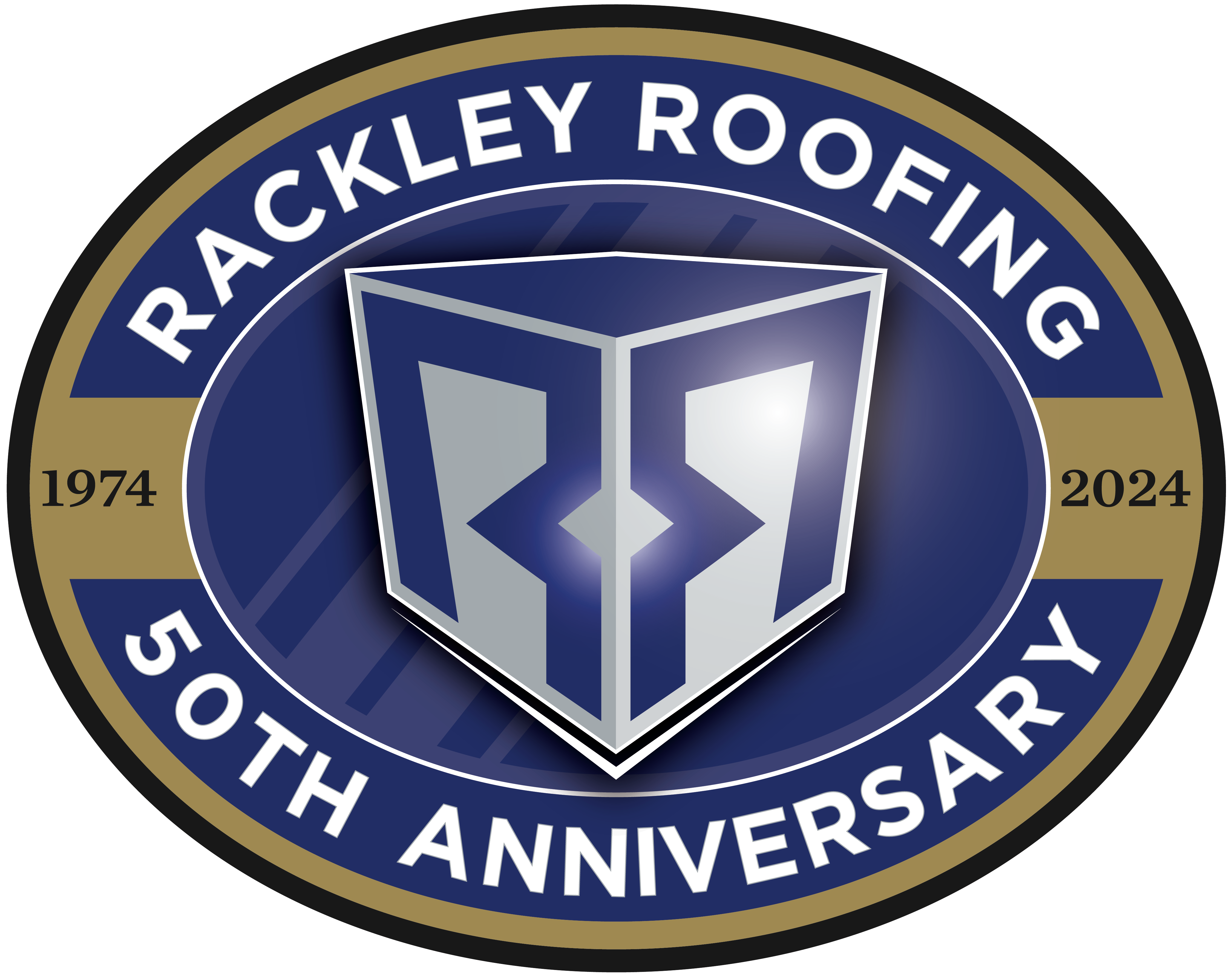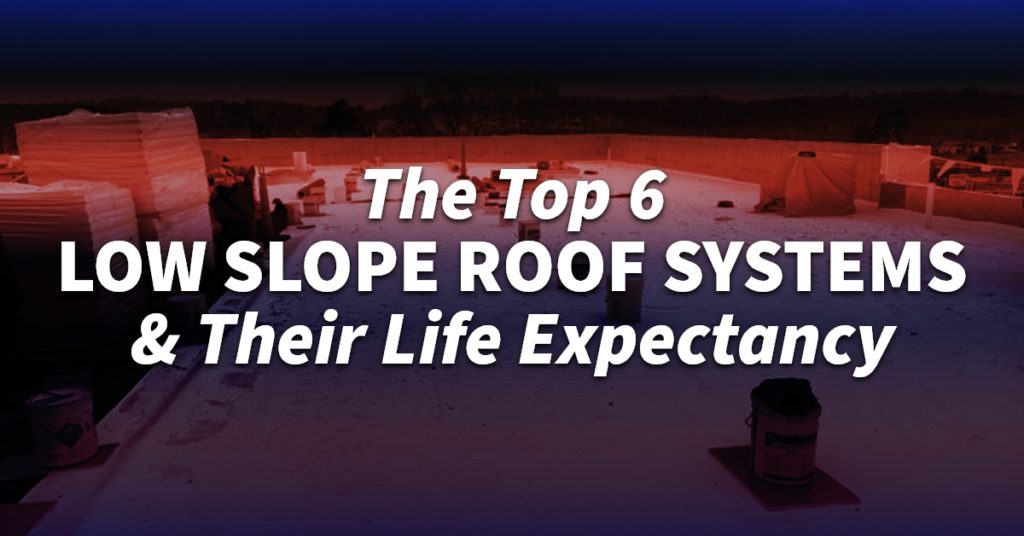How much do you know about the new-to-you roof protecting your commercial property? Do you know when it was installed, or how long it should last? As you start to plan for roof succession, knowing the life expectancy of six top low-slope roofing systems could save you hours of headaches and thousands of dollars.
Comparing Roofing Systems
Your best guide to comparing the top six roofing systems is your commercial roofer. While you can perform some basic research on your own to suss out average lifespans, a commercial roofer, like Rackley Roofing, can help you balance all your concerns:
- Purchase and installation cost
- Square footage
- Speed of installation
- Installation disruption — odors, noises, staging area needs
- Maintenance
- Whole-life costs
Your company’s unique needs may not align with another nearby business’s requirements. No one roofing system is best for all commercial roofs.
1. Ethylene Propylene Diene Monomer (EPDM)
Ethylene propylene diene monomer roofing goes by the less tongue-twisting initialism EPDM. This synthetic rubber rolled product performs well on all low-slope (often incorrectly called “flat”) roofs. EPDM can handle higher temperatures than other roofing materials (TPO, for example). EPDM is only available in black and white colors, with white providing good energy efficiency thanks to reflectivity.
Manufacturers of EPDM make claims of typical lifespans of 50 years. The product first appeared in 1962 but was not widely used until the 1970s. This means this rolled membrane, though durable and versatile, does not have the track record of BUR. Your EPDM roof installation may well last 50 years thanks to its natural pliability, extraordinary resilience, and easy maintenance.
2. Metal and Architectural Sheet Metal
Not all commercial roofing is low-slope. To answer the need for durable, attractive steep-slope commercial roofing, few materials match metal roofing. Whether made from alloys or native metals, these roofs typically last 50 to 100 years, with long histories to prove themselves.
Metal roofs require specialized equipment, training, and skills. When properly installed, they are striking in their beauty, economical in their low maintenance, and durable in the extreme.
Complementing metal roofs are architectural sheet metal pieces such as aesthetic designs, wall panels, and canopies. With proper care, these accessory features can match metal roofing’s longevity.
3. Polyvinyl Chloride (PVC)
Polyvinyl chloride (PVC) roofing, a type of single-ply thermoplastic membrane made up of chlorine (from salt) and vinyl (from petroleum), has many features to recommend it. A relative youngster in the roofing field, PVC has been used since the mid-1970s. Its benefits include quick installation, economies of maintenance and scale, puncture resistance, and thermal resistance. It does not shrink or expand rapidly in changing temperatures, resists ultraviolet degradation, and is flexible enough to fit just about any roofing configuration.
A high-quality commercial roofer can install a PVC roof that will last between 20 and 30 years. PVC roofs need very little maintenance and are especially easy to maintain by your nearby commercial roofer (facilities crews should remain on solid ground or inside your facility, for everyone’s safety).
4. Thermoplastic Polyolefin (TPO)
Thermoplastic Polyolefin (TPO) single-ply membranes are a kind of rubberized roofing system. TPO roofs provide economical advantages over more labor-intensive systems like BUR and modified bitumen roofs.
A TPO roof is highly reflective, resists ultraviolet light degradation and harsh chemicals, and is an economical alternative to PVC roofing. With a lifespan of around 25 years, this versatile roofing material can be formulated with different fillers for different needs.
5. Built-Up Roofing (BUR)
Tar and gravel roofing systems, also called Smooth Modified BUR, have been capping commercial and industrial buildings for more than 100 years.
A BUR roof comprises layers of asphalt (modified bitumen) and felts (reinforcing fabrics). With several of these sandwich layers, your building’s roof becomes a complete, water-resistant membrane.
When correctly installed and well maintained — and those are absolutely critical qualifiers — a BUR roofing system is an economical choice in commercial roofing with a typical lifespan of 20 to 30 years. If the roof is poorly installed, hastily completed, or neglected through years of “deferred maintenance,” the life could be as little as ten years. Rackley Roofing does not install hot BUR, we only work with cold BUR installations.
6. Green Roof Systems
Many innovative businesses seek to transform their roofs into real assets through green roofing options and paver systems. If your commercial building’s roof can handle the static and dynamic loads, a green roof could provide:
- A welcome oasis for employees
- An alluring mecca for clients
- A unique profit center for customers
Rooftop gardens, restaurants, clubs, and bars are only some of the inspirations that can emerge from a green roof system. They are “green” not just for their generous use of plants but also for their locked-in energy savings and water conservation.
Green roofs, by design, have significant maintenance demands and average lifespans of around 40 years. Rackley Roofing provides complete roofing systems and roofing services throughout the southeastern United States. Connect with us today to learn what skills, experience, and roofing materials we can bring to your business.




